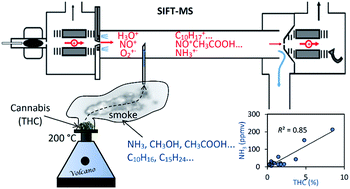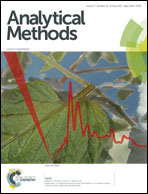Release of toxic ammonia and volatile organic compounds by heated cannabis and their relation to tetrahydrocannabinol content
Abstract
Studies have been carried out of the compounds generated from heated “street” cannabis in the commercial device known as the “Volcano” using the selected ion flow tube mass spectrometry (SIFT-MS) analytical method. Such vaporising devices are preferred for the delivery of the cannabis active ingredients for pain relief and therapeutic purposes since they remove from the smoke the harmful high molecular weight compounds such as tars and polycyclic aromatic hydrocarbons. Whilst it is known that smoking cannabis is associated with adverse health effects, little is known about risks of its inhalation of volatile compounds from vaporizers. In the present study, the concentrations of the volatile lower molecular weight compounds ammonia, methanol, acetic acid, methyl acetate, monoterpenes and sesquiterpenes present in the trapped air/vapour volume of the “Volcano” have been determined directly by SIFT-MS obviating sample collection/pre-concentration and delayed off-line analysis as used by most other analytical techniques. The concentrations of these compounds are compared to the tetrahydrocannabinol (THC; expected to be largely Δ-9-THC) content of the cannabis plant material as assayed using standard extraction/derivatisation/GC-MS analysis. The observed high concentrations of ammonia were strongly correlated with the THC which is largely contained in the buds of the cannabis plant, whereas the identified volatile organic compounds were predominantly released by the leaves. Whilst the “Volcano” device removes some toxic compounds from the smoke and reduces their inhalation by its user, it likely leads to enhanced ingestion of toxic ammonia known to result in neurobehavioral impairment.


 Please wait while we load your content...
Please wait while we load your content...